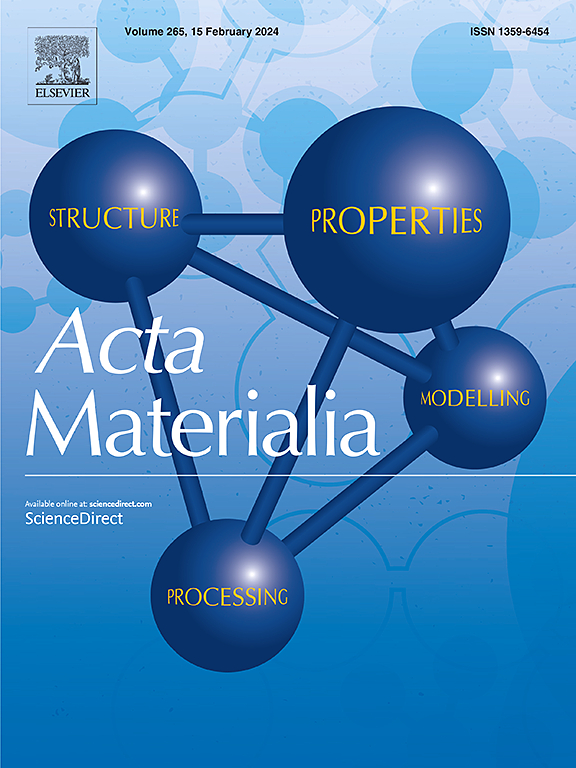用于高熵合金开发的高通量物理和数据驱动框架
IF 8.3
1区 材料科学
Q1 MATERIALS SCIENCE, MULTIDISCIPLINARY
引用次数: 0
摘要
将高熵合金的成分、热流体性能、凝固动力学和微观组织之间的关系联系起来,对于提高高熵合金的实际应用具有重要意义。然而,由于HEAs的复杂、多组分特性导致设计空间大,热流体特性范围广,因此预测这些特性面临重大挑战。为了应对这一挑战,采用了多物理场模拟框架和数据驱动的替代建模方法,以提供一种快速评估HEA成分变化如何导致材料性能和凝固铸造微观结构变化的方法。基于物理的框架依次耦合了用于材料特性的CALPHAD模型、用于凝固过程热条件的计算流体动力学(CFD)模型和用于微观结构的元胞自动机(CA)模型。通过基于物理的框架的微观结构输出的降维形式来训练数据驱动的代理模型,该模型可以从热条件中重建微观结构统计。通过角分辨弦长分布(ARCLDs)对微观结构进行统计表示,并通过主成分分析(PCA)识别主要的ARCLD模式,实现了降维。这种替代建模方法为根据HEA成分和凝固条件预测铸态组织特征提供了显著的加速,并且高度适应于其他凝固过程。本文章由计算机程序翻译,如有差异,请以英文原文为准。


A high-throughput physics- and data-driven framework for High-Entropy Alloy development
Linking the relationships between composition, thermo-fluid properties, solidification dynamics, and the resulting microstructure is of great importance in increasing the adoption of High Entropy Alloys (HEAs) into practical applications. However, predicting these characteristics presents significant challenges due to the complex, multi-component nature of HEAs resulting in a large design space with a vast range of thermo-fluid properties. To -address this challenge, a multi-physics simulation framework and a data-driven surrogate modeling approach are implemented, to provide a method to rapidly assess how changes in HEA composition will lead to changes in material properties and as-solidified, cast microstructure. The physics-based framework sequentially couples CALPHAD models for material properties, computational fluid dynamics (CFD) for thermal conditions during solidification, and Cellular Automata (CA) for microstructure. A data-driven surrogate model, which can reconstruct microstructure statistics from the thermal conditions, is trained via a reduced-dimensional form of the microstructure output of the physics-based framework. Dimensionality reduction is achieved through a statistical representation of microstructure via Angularly Resolved Chord Length Distributions (ARCLDs), and identification of the primary ARCLD modes via Principal Component Analysis (PCA). This surrogate modeling approach provides a significant speedup for predicting as-cast microstructure features from HEA composition and solidification conditions, and is highly adaptable to other solidification processes.
求助全文
通过发布文献求助,成功后即可免费获取论文全文。
去求助
来源期刊

Acta Materialia
工程技术-材料科学:综合
CiteScore
16.10
自引率
8.50%
发文量
801
审稿时长
53 days
期刊介绍:
Acta Materialia serves as a platform for publishing full-length, original papers and commissioned overviews that contribute to a profound understanding of the correlation between the processing, structure, and properties of inorganic materials. The journal seeks papers with high impact potential or those that significantly propel the field forward. The scope includes the atomic and molecular arrangements, chemical and electronic structures, and microstructure of materials, focusing on their mechanical or functional behavior across all length scales, including nanostructures.
 求助内容:
求助内容: 应助结果提醒方式:
应助结果提醒方式:


